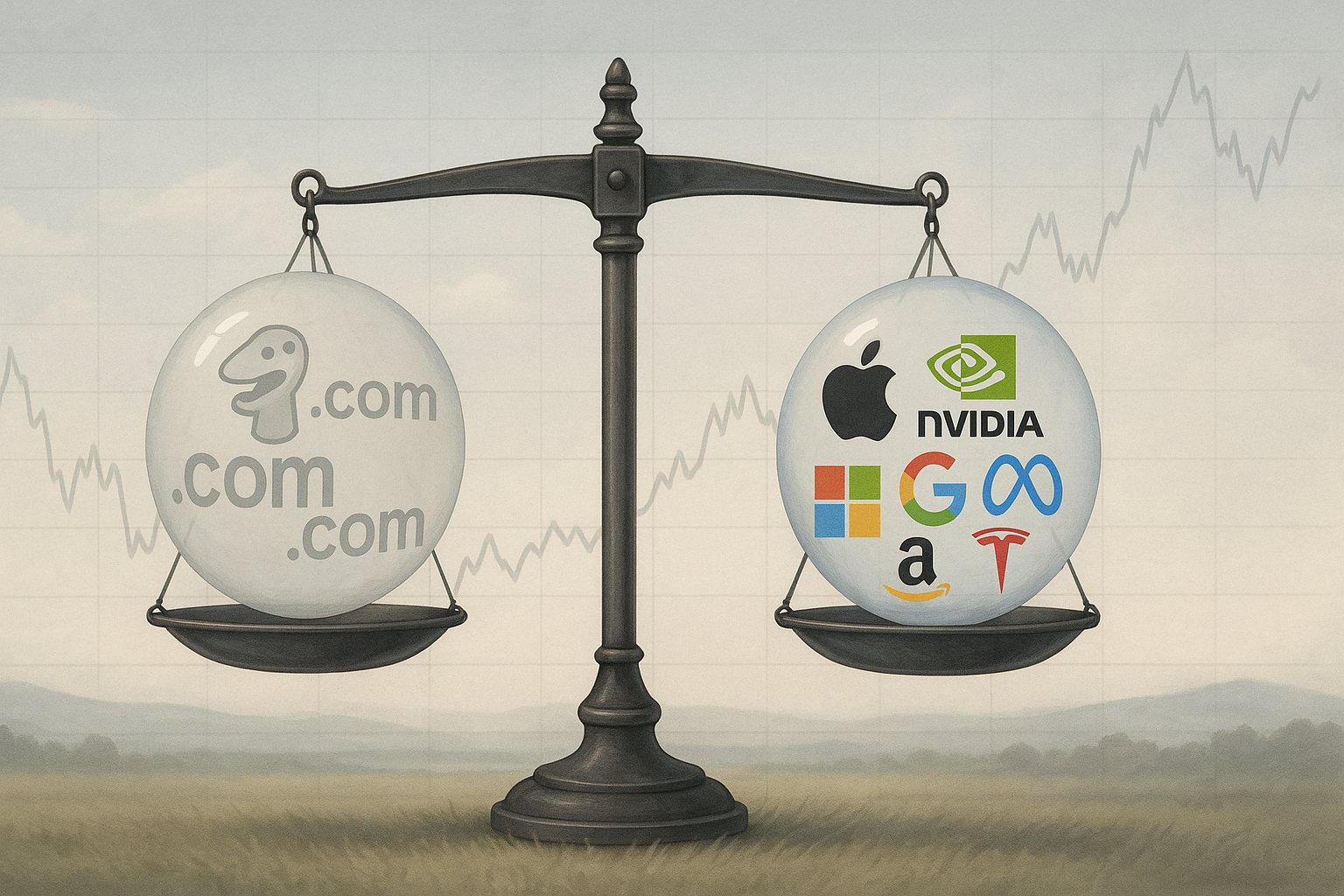Are we in a tech bubble? It's the question that haunts investor nightmares and dominates CNBC panels these days. And honestly, it's about as comfortable to address as being asked if those pants make someone look fat—there's potential discomfort no matter how you answer.
Thank goodness for Goldman Sachs. Their recent analysis comparing today's market to previous bubbles gives us something meatier than opinion to chew on. They've done the homework, stacking our current tech heavyweights against the dot-com era's poster children, Japan's 1980s excesses, and those old-school Nifty Fifty stocks your grandfather probably still talks about.
Here's the headline: The "Magnificent 7" (that's Apple, Nvidia, Microsoft, Amazon, Google, Meta, and Tesla for those who've been living under a financial rock) are trading at roughly 23 times forward earnings. Compare that to the tech darlings of 2000, which were commanding an absolutely bonkers 52 times multiple.
Let that sink in. The difference is... substantial.
But wait—there's more beneath these surface-level metrics. These aren't just cheaper stocks; they're fundamentally different beasts altogether.
Today's tech giants boast a return on equity around 44%, versus a measly 28% for their dot-com ancestors. Most are sitting on cash hoards that would make Scrooge McDuck blush, rather than drowning in debt. They're not promising to revolutionize commerce "someday"; they're actually doing it while printing money now.
Remember Pets.com? That sock puppet had more staying power than the actual business. (I still sometimes wonder what happened to that little guy.)
The contrast with today couldn't be starker. Apple generates enough quarterly cash to buy small nations. Microsoft transformed from "that Windows company" into a cloud computing colossus. These aren't your father's speculative tech plays—they're profit-generating machines with moats wider than the Grand Canyon.
I've covered tech investing since before the dot-com implosion, and the difference in business fundamentals is what stands out most to me. Back in 2000, we were paying premium prices for companies whose business models often amounted to "get eyeballs now, figure out profits... eventually?" The typical dot-com firm burned cash faster than a pyromaniac at a match factory.
Today? These companies have figured out monetization in ways that would make their predecessors weep with envy.
That said—and there's always a "that said" in finance—there are legitimate reasons for caution.
The Magnificent 7 now represent roughly 30% of the S&P 500's market cap. When any group becomes that influential, things can get... weird. Japan learned this lesson the hard way when its bubble popped in the early '90s, sending the Nikkei into a depression so long it qualified for its own therapist.
There's also the expectations game. NVIDIA trading at 30+ times forward earnings might make sense given its AI dominance, but those multiples assume the growth story continues at a breakneck pace. Miss earnings by a whisker, and suddenly that theoretical 20% daily drop becomes painfully real.
Look, Goldman's analysis doesn't—and can't—definitively tell us whether we're in a bubble. Markets are complex systems, not pregnancy tests with clear yes/no answers. But it does suggest that simple comparisons to 2000 miss crucial differences in business quality and financial strength.
Does this mean tech stocks can't tumble? Of course not. Even the healthiest companies can become overvalued. The AI narrative that's been driving enthusiasm could cool off. Regulations might tighten. Interest rates could stay elevated longer than the market expects.
But there's a distinction worth making between a correction and a bubble bursting. One is a normal market process; the other leaves economic carnage and psychological trauma in its wake.
Perhaps the most valuable insight from Goldman's work is this: historical comparisons provide context, not certainty. Today's market isn't the market of 2000, just as 2000 wasn't 1989 Japan. Each era has its unique dynamics, excesses, and blind spots.
The tech leaders of today have built businesses with genuine staying power. Their valuations reflect that reality, even if they're also pricing in substantial future growth. Whether that constitutes a bubble depends less on simple metrics and more on whether you believe their dominant positions will hold in an increasingly digital economy.
I don't know if we're in a bubble. Nobody really does. But I do know that comparing P/E ratios across eras without considering fundamental business quality is like comparing housing prices without considering location—the numbers tell only part of the story.
And that, I suspect, is exactly what Goldman was trying to tell us.
